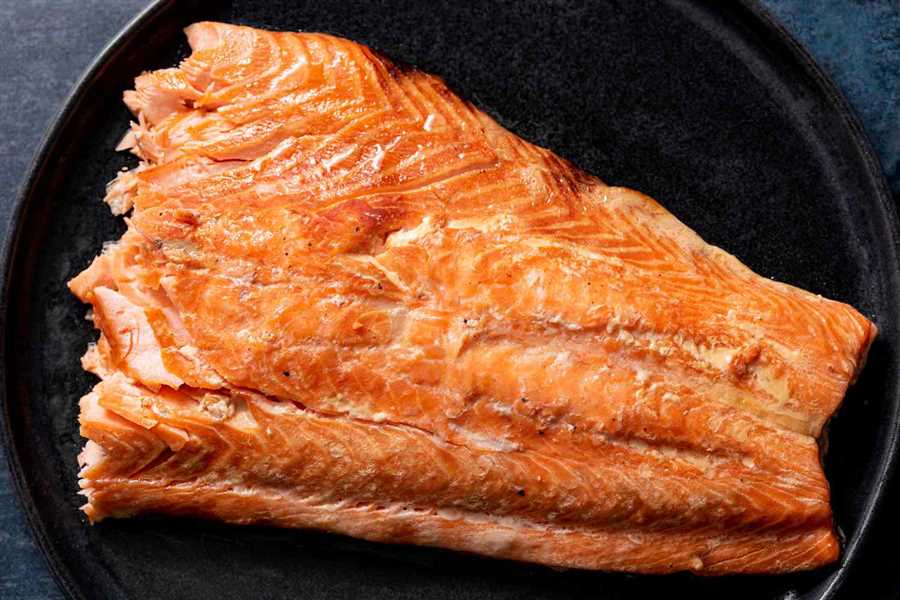Smoked salmon is a delicious and versatile ingredient that has become a staple in many modern kitchens, But a common question arises when it comes to preparing and eating smoked salmon – does it need to be cooked before eating?
In this comprehensive guide we’ll dive into all aspects of smoked salmon to definitively answer whether or not cooking is required. We’ll look at the smoking process food safety considerations, proper storage and reheating, and the nutritional value of this tasty fish.
How Smoked Salmon is Made
To understand if cooking is necessary, it’s important to first know how commercially smoked salmon is prepared. Smoked salmon begins its journey as raw Atlantic salmon fillets. These fillets undergo a process called “brining” where they are submerged in a saltwater solution. This draws out moisture and firms up the flesh.
After brining, the salmon enters the smoking chamber. There are two main methods of smoking – hot smoking and cold smoking:
-
Hot smoking involves exposing the fish to smoke at high temperatures of 100°F to 225°F This both cooks the salmon and infuses flavor. Hot smoked salmon is safe to eat as-is
-
Cold smoking uses much lower temperatures below 90°F. This preserves the salmon without fully cooking it. Cold smoked salmon requires refrigeration and is more perishable.
Is Smoked Salmon Safe Uncooked?
While smoking helps preserve the salmon, it is still a raw product and carries a risk of foodborne illness if not handled properly. The CDC warns that smoked fish may contain Listeria, Salmonella, and other pathogens.
To reduce risk, it’s vital to:
- Refrigerate smoked salmon at 40°F or below
- Check expiration and “use by” dates
- Look for damaged packaging
- Avoid cross-contamination
Pregnant women, young children, elderly, and those with weakened immune systems should take particular care with smoked fish.
Does Smoked Salmon Need Cooking?
The short answer is: it depends on the type of smoked salmon.
Hot smoked salmon is cooked to safe internal temperatures during processing. It can be eaten straight from the package without additional cooking.
Cold smoked salmon is more akin to raw fish. It’s recommended to cook cold smoked salmon to 145°F internal temperature before eating to kill any potential bacteria.
If uncertain whether your smoked salmon is hot or cold smoked, it’s advisable to err on the side of caution and briefly cook before eating.
How to Cook Smoked Salmon
There are several easy cooking methods to make cold smoked salmon safe for consumption:
-
Oven – Bake at 400°F for 10-12 minutes until internal temp reaches 145°F.
-
Sauté – Cook in oil over medium-high heat 3-4 minutes per side until 145°F internal.
-
Grill – Quickly grill 1-2 minutes per side. Salmon cooks fast, so watch closely.
-
Microwave – Microwave in 30 second intervals until heated through, checking internal temp with a food thermometer.
Aim for an internal temperature of at least 145°F. Cooking too long can dry out the tender salmon.
How to Reheat Leftover Smoked Salmon
Since hot smoked salmon is pre-cooked, leftovers just need gentle reheating. Ideal methods include:
- Warming in a 275°F oven for 5-10 minutes
- Sautéing over medium-low heat for 2-3 minutes
- Microwaving on 50% power in 30 second increments
- Adding to hot pasta, soup, or stew right before serving
Avoid prolonged reheating which can worsen moisture loss. Let rest 1-2 minutes before serving.
Proper Storage of Smoked Salmon
To optimize freshness and shelf life:
-
Refrigerate opened packages in sealed containers, lasting around 5 days.
-
Freeze for 2-3 months in freezer bags or airtight containers. Thaw overnight in fridge.
-
Store unopened vacuum packs for up to 2 weeks refrigerated.
-
Keep canned smoked salmon 1 year unopened, 3-4 days after opening.
Discard smoked salmon that smells unpleasant or has an off color or texture.
Is Smoked Salmon Nutritious?
Yes, smoked salmon contains many beneficial nutrients:
-
High in protein – builds muscle, repairs tissues.
-
Rich in Omega-3s – reduces inflammation, heart healthy fats.
-
Vitamin D – immune and bone support.
-
Selenium – antioxidant, cancer prevention.
-
B vitamins – converts food into energy.
However, smoked salmon is quite high in sodium content. Those limiting salt intake should enjoy smoked salmon in moderation.
Overall, smoked salmon can be part of a healthy diet when proper food safety precautions are followed. Both hot and cold smoked salmon offer great flavor and nutrition. Hot smoked is ready to enjoy straight from the package, while cold smoked salmon requires a brief cooking for food safety. With proper handling, storage, and preparation, smoked salmon makes for a tasty and healthy addition to any meal.

The Truth About How Smoked Salmon Is Made
FAQ
FAQ
Are you supposed to cook already smoked salmon?
- Smoked salmon does not need to be cooked or heated before eating. It is safe to consume straight out of the package
- When storing smoked salmon, it is best to keep it refrigerated.
- In terms of food pairings, smoked salmon can be enjoyed in various ways.
Can you eat smoked salmon out of the package?
Yes, commercially produced smoked salmon is typically ready to eat straight from the package. The smoking process, especially hot smoking, cooks the salmon, making it safe to consume without further cooking.
Can you eat raw smoked salmon?
Yes, it is generally safe to eat raw smoked salmon, especially if it’s cold-smoked. The smoking process, along with other steps like brining and curing, helps preserve the fish and reduce the risk of bacterial contamination.
Is smoked salmon good to eat without cooking?
Cold-smoked salmon is safe to eat for most people, experts say, but they advise some people to avoid it. Handle smoked salmon properly to avoid health risks.
